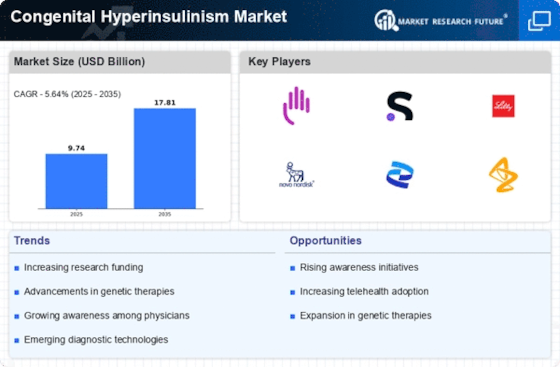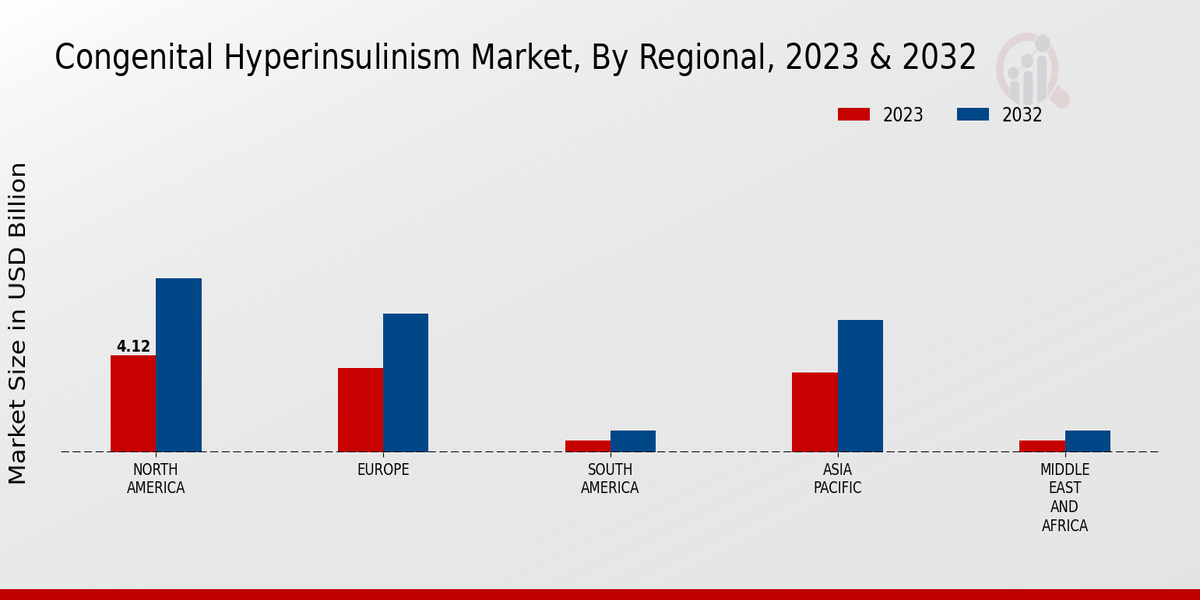Advancements in Diagnostic Technologies
Advancements in diagnostic technologies play a crucial role in shaping the congenital hyperinsulinism market. The introduction of innovative screening methods, such as genetic testing and continuous glucose monitoring, has significantly improved the accuracy of diagnosing congenital hyperinsulinism. These technologies enable earlier detection and intervention, which is vital for preventing severe hypoglycemic episodes in affected infants. As diagnostic capabilities expand, healthcare providers are better equipped to identify and manage this condition effectively. The increasing availability of advanced diagnostic tools is likely to drive market growth, as timely diagnosis is essential for optimizing treatment outcomes and improving the quality of life for patients.
Increased Focus on Personalized Medicine
The increased focus on personalized medicine is transforming the landscape of the congenital hyperinsulinism market. Tailoring treatment approaches to individual patient profiles, including genetic and metabolic factors, enhances the efficacy of interventions. This trend is particularly relevant in congenital hyperinsulinism, where variations in genetic mutations can influence treatment responses. As healthcare providers adopt personalized strategies, the demand for specialized therapies is likely to rise. This shift towards individualized care not only improves patient outcomes but also drives market growth by fostering the development of targeted therapies that address the unique needs of each patient.
Growing Investment in Rare Disease Research
The growing investment in rare disease research is a pivotal factor influencing the congenital hyperinsulinism market. Governments and private organizations are increasingly recognizing the need to fund research initiatives aimed at understanding and treating rare conditions like congenital hyperinsulinism. This influx of funding supports the development of novel therapies and enhances clinical trial opportunities. As research progresses, it is anticipated that new treatment options will emerge, addressing the unmet needs of patients. The commitment to advancing knowledge in this area not only fosters innovation but also raises awareness about congenital hyperinsulinism, potentially leading to improved patient outcomes and market expansion.
Rising Incidence of Congenital Hyperinsulinism
The rising incidence of congenital hyperinsulinism is a notable driver in the congenital hyperinsulinism market. Recent studies indicate that congenital hyperinsulinism affects approximately 1 in 50,000 live births, with variations in prevalence across different populations. This increasing recognition of the condition has led to heightened demand for diagnostic and therapeutic options. As more cases are identified, healthcare systems are compelled to allocate resources towards effective management strategies. The growing patient population necessitates advancements in treatment modalities, thereby propelling the congenital hyperinsulinism market forward. Furthermore, the need for specialized care and long-term management of affected individuals underscores the importance of developing targeted therapies and comprehensive care protocols.
Rising Awareness Among Healthcare Professionals
Rising awareness among healthcare professionals is a significant driver in the congenital hyperinsulinism market. Increased education and training regarding the condition have led to improved recognition and management of congenital hyperinsulinism in clinical settings. As healthcare providers become more knowledgeable about the symptoms and implications of this disorder, they are better equipped to diagnose and treat affected patients. This heightened awareness is likely to result in earlier interventions and more effective management strategies, ultimately benefiting patient outcomes. Furthermore, as more professionals engage in discussions and research related to congenital hyperinsulinism, the market is expected to expand, reflecting the growing commitment to addressing this rare condition.


















Leave a Comment